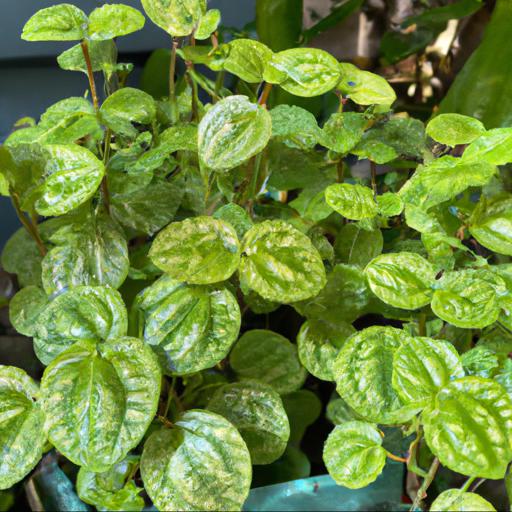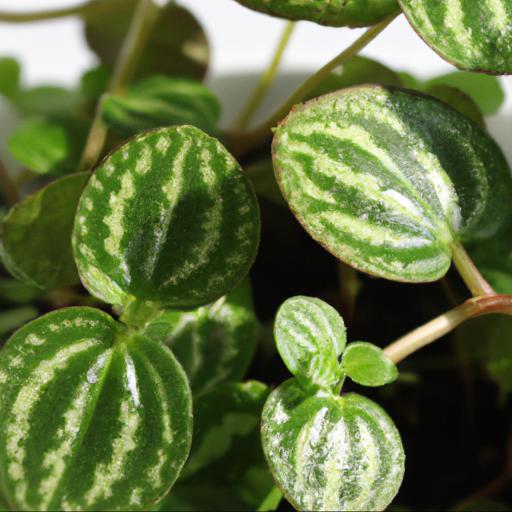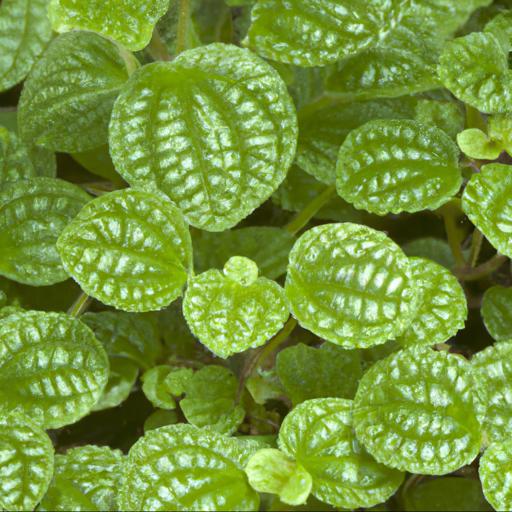Pilea peperomioides, commonly known as the Chinese money plant, is an evergreen perennial plant native to Yunnan Province in Southern China. It is a popular houseplant due to its attractive, round, dark green leaves and its ease of care.
Pilea peperomioides is an easy to care for plant that thrives in bright, indirect sunlight and requires minimal watering. With the right conditions, it can grow quickly and produce clusters of small, white flowers. Pilea peperomioides is an excellent choice for novice and experienced gardeners alike, as it is low maintenance and requires little effort to keep it healthy and looking great.
Benefits of growing pilea peperomiodes

Pilea peperomiodes, better known as the Chinese Money Plant, is a small and resilient houseplant that offers an array of benefits for homeowners. Boasting a long lifespan with minimal effort in care, this charming plant is an ideal addition to any home.
In addition to its visual appeal, Pilea peperomiodes is also incredibly easy to care for. This houseplant can survive in erratic weather and require only occasional watering. Furthermore, the Chinese Money Plant can be propagated quickly, allowing you to create a full, lush garden in no time.
Pilea peperomiodes can improve air quality, by removing volatile organic compounds (VOCs) from the air. VOCs are found in many household cleaning products, leading to poor air quality indoors. Houseplants, like the Chinese Money Plant, are known to help reduce VOCs in the air, leading to a healthier space.
The Chinese Money Plant is a great plant for novice gardeners. It is easy to care for and can thrive in almost any conditions.
Additionally, it boasts a wide variety of benefits, from beautiful visuals to air purification. For a low-maintenance houseplant, the Chinese Money Plant is a great starting point for any indoor garden.
Tips for growing pilea peperomiodes

Pilea peperomioides is a beautiful houseplant that is fast becoming a houseplant favorite. It is known for its bright green leaves that create a beautiful and vibrant look to your home. Growing pilea peperomiodes doesn’t have to be difficult and can be a great adventure in botanical exploration.
With a few tips and tricks, you can have a thriving and healthy pilea peperomiodes in your home. The most important advice for growing pilea peperomiodes is to give the plant plenty of bright, indirect light and enough humidity in the environment.
The bright light helps keep the leaves a vibrant green, and the humidity keeps the leaves from getting dry and yellow. Ideal spots for pilea peperomiodes are in a sunny window sill or a few feet away from a sun-facing window. Additionally, misting the leaves helps provide the plant with humidity and can also help with preventing spider mites which are devastating to pilea peperomiodes.
Another important aspect of caring for pilea peperomiodes is the watering regime. The soil should be allowed to dry out between watering, preventing the roots from rotting, but misting with water can also help keep the soil consistently moist.
The best way to gauge when to water is to feel the soil – if it is dry up to your first knuckle, it is time to water. Since the plant takes up its moisture through its leaves, spraying the leaves with a water bottle can help keep the leaves hydrated and healthy.
Overall, pilea peperomiodes is an easy-to-care-for houseplant as long as you keep it in the right environment with indirect light, decent humidity, and consistent watering. With the right environment and a bit of patience, you can have lovely pilea peperomiodes thriving in the home.
Common problems with pilea peperomiodes

Fondly referred to as Chinese money plants, many of us adore our Pilea peperomioides, but like any living thing, they can sometimes run into problems. As an expert in UK gardens, I’d like to offer some advice on common issues with Pilea. Caring for this plant can be tricky, but with a little bit of knowledge and dedication, it should be a breeze.
The most common problem with Pilea is lack of light and vitamins. Pilea need bright, indirect sunlight and need to be supplied with an all-purpose fertilizer twice a year.
If you’re noticing a deeper yellowing of the leaves, this is a sign that it could be craving more light or nutrition. Make sure to rotate your Pilea once a month to ensure that all parts of the plant are getting enough light. The next issue for many Pilea owners is watering.
Pilea need to be kept evenly moist and should never be allowed to dry out completely. During the summer, it will need to be watered as often as once a week to once a week.
During the winter, however, your Pilea will need less frequent waterings. Too much water can lead to root rot, so it’s important to make sure to not over do it!
Finally, our furry friends may pose a bit of a dilemma for Pilea owners. Cats in particular are drawn to the fuzzy leaves, so a preventative solution is key here. Placing lotion, vinegar, or cinnamon sticks around the Pilea can deter cats from using it as a scratching post.
If your cat just can’t seem to be kept away, you may have to look into keeping them out of the room all together. Understanding and addressing common problems with our Pilea can go a long way towards keeping it healthy and happy. With a little bit of patience and love, you’ll be able to keep your Pilea thriving for years to come.
How to propagate pilea peperomiodes
Pilea peperomioides, or Chinese money plant, is one of the most popular houseplants in the UK. Native to the Yunnan province of China, these lush plants have a thick, juicy stem, and their round dark green leaves give an instant feel of nature indoors. If you’ve been lucky enough to be gifted one of these plants (or if you’ve managed to find one of your own), you might be wondering how to propagate your new housemate.
Propagating Pilea peperomioides is relatively easy and can be done in a few different ways. The most popular way of propagating these plants is through stem cuttings.
Cut 3-5 centimeter pieces from the stem of your Pilea and make sure each piece has three or four leaves. Place the cuttings in a fast draining soil mix, making sure to keep the soil moist but not soggy. Once the end of the cuttings have rooted, the plants will be ready to be potted in their own separate containers.
If cutting the stems from the main plant seems a little daunting, don’t worry: your pilea plants will often self-propagate. This refers to the small plants that grow on the stems of the main plant.
When these plants are ready, gently remove them from their stem and plant them in their own pots. If the soil looks a little dry, water lightly until fully rooted. Whether you choose to propagate your Pilea with cuttings or by self-propagation, the key thing to keep in mind is to make sure the soil is the correct type.
Pilea peperomiodes needs soil that is fast draining and won’t become waterlogged. Try to use soil that is rich in organic matter, such as coco peat or perlite.
This will help your new plants thrive and will ensure they have all the nutrients they need.
Our video recommendation
Conclusion
Pilea peperomioides, commonly known as the Chinese Money Plant, is a unique houseplant with round leaves and long stems. It is easy to care for and is known for its ability to propagate quickly. Pilea peperomioides is an easy-to-care-for houseplant that adds a unique look to any room.
It is known for its round leaves and long stems and its ability to propagate quickly. With the right care, it can be a beautiful addition to any home.
FAQ
What are the benefits of growing Pilea peperomioides?
The benefits of growing Pilea peperomioides include easy care, low maintenance, and fast growth. It is also known to be a great air purifier, and its attractive foliage adds a decorative touch to any space.
How often should Pilea peperomioides be watered?
Pilea peperomioides should be watered when the top inch of soil feels dry to the touch. Water thoroughly until it drains from the bottom of the pot, and then allow the soil to dry out again before watering.
What type of soil is best for Pilea peperomioides?
Well-draining, nutrient-rich soil is best for Pilea peperomioides.
How much light does Pilea peperomioides need?
Pilea peperomioides needs bright, indirect light to thrive.
How do you propagate Pilea peperomioides?
Pilea peperomioides can be propagated by division or stem cuttings. To propagate by division, carefully separate the plant into two or more sections and pot each section in its own pot. To propagate by stem cuttings, cut a stem just below a node and place the cutting in a pot filled with moist potting soil.
What pests and diseases affect Pilea peperomioides?
Common pests and diseases that affect Pilea peperomioides include aphids, mealybugs, spider mites, root rot, and powdery mildew.

